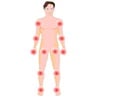A new study has found that children as young as five years old tend to be more generous when they are aware that their actions can be seen by someone else.

For their study, Kristin Lyn Leimgruber and colleagues presented five year olds with stickers and gave them the option of sharing one or four stickers with another five year old.
The authors found that children were more generous when they could see the recipient than when the recipient was hidden from view, and were also more generous when they had to give stickers in a transparent container rather than an opaque one (meaning the recipient could see what they were receiving).
They also found that these behaviors were independent of how many stickers the children were given to keep for themselves.
According to the authors, these results show that children as young as five can make strategic choices about whether to be generous, depending on whether or not a recipient is aware of their actions.
Leimgruber explains, "Although the frequency with which children acted antisocially is striking, the conditions under which they chose to act generously are even more interesting and suggest that children likely use much more sophisticated prosocial strategies than we previously assumed.
Advertisement
The study was recently published in the open access journal PLOS ONE.
Advertisement









